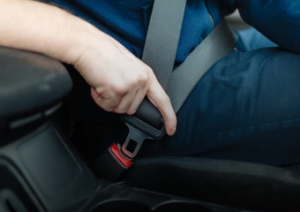Atlanta Product Liability Lawyer
If you’re injured by using a defective consumer product in Georgia – whether it’s an automotive brake failure, a toaster or a blender, or even a bad prescription drug – speak at once to an experienced Atlanta product liability lawyer at Spaulding Injury Law. When a consumer in Georgia is injured by a commercially-sold product, the injured person may file a product liability claim and seek reimbursement for his or her medical expenses, lost wages, and all other related losses and damages. If you use a product as intended, and you are injured, obtain the legal help you’ll need from an experienced Atlanta product liability attorney at Spaulding Injury Law.
You may file a product liability claim in Georgia for either or both of two reasons: a defect in the design or manufacture of the product, or improper marketing including the failure to warn consumers about risks or to provide adequate directions for the product’s use. An experienced Atlanta product liability attorney at Spaulding Injury Law can explain your legal rights and options, identify the party or parties with potential liability, and help you seek compensation – and justice – after an injury caused by a defective consumer product.
What Should You Do Immediately After an Injury?
Often, product-related injuries can be serious, long-lasting, or even permanent. A traumatic brain injury, for example, can emerge slowly over time and become a serious, even disabling medical condition. If you are injured in Georgia by any consumer product, obtain medical treatment at once; do not discuss the case with an insurance company prior to consulting your attorney; and consult as soon as possible with an experienced Atlanta product liability lawyer at Spaulding Injury Law.
Product liability law is complicated in our state. In most cases, someone who is injured by a defective or dangerous consumer product must file a product liability claim within two years from the time when the injury is or should have been discovered. However, there are a number of complications and exceptions to Georgia’s two-year statute of limitations for product liability claims, so anyone who is injured by a consumer item will need a good product liability lawyer’s advice and recommendations.
What is Modified Comparative Negligence?
Under the “modified comparative negligence” rule in Georgia law, you may not recover damages if, personally, you were 50 percent or more at fault for causing your own injury or injuries. If you were less than 50 percent at fault, you may recover damages in proportion to the degree to which you were to blame. A $200,000 award, for instance will be reduced by $80,000 if you were 40 percent responsible for your own injury.
How Does a Product Liability Claim Work in Georgia
The law in Georgia provides procedures for making a product liability claim against a manufacturer of a particular product. Product liability claims can be traditional personal injury claims or wrongful death claims by the survivors of the injured victim.
To make a successful product liability claim in Georgia, the plaintiff must allege and prove four primary elements. These are:
- The product had a defect at the time of the plaintiff’s injury
- The defect caused the injury or the death
- The product was in essentially the same condition as that in which it left the place of manufacturing
- The plaintiff used the product as the manufacturer intended it to be used
Under Georgia law, strict liability means that a party can be found liable for injuries or damages without the plaintiff being required to prove that the party was negligent. In other words, the party in control, the manufacturer of the product, has absolute legal responsibility for an injury without any need for proof of carelessness or fault. Generally, the plaintiff will not have to prove negligence since product liability is a strict liability cause of action.
The doctrine of strict liability developed from several essential gaps in the negligence system. First, public policy says that, where two parties are equally free from fault in an injury, the party with control which usually profits from the situation should bear liability for any injuries rather than the innocent third party. For example, the party in control, a manufacturer, has a much greater opportunity to know about any defects in a product and the opportunity to repair the defect that is not available to the third-party victim.
Another important concept is the “inherently dangerous product” doctrine. The law holds that some products, no matter how carefully used, will always be dangerous to the user. A classic example is this includes high explosives. No matter how careful the user is, explosives will always be dangerous. With such products, courts, reasoning from warranty concepts and the public policy of who should bear the liability, concluded that the manufacturer who benefited from the product and can control its safety to the extent possible should bear any liability rather than the innocent third-party user of the product.
Types of Product Defects
Design Defects
A design defect products liability claim says that there was a mistake in the original design of the product that makes the resulting product unsafe. The defect is inherent in the design and does not depend upon a mistake in the product’s manufacture. To win a design defect case, the plaintiff usually must prove that there is a hypothetical safer design that will be as economically practical as the original design and will function as well as the original, retaining the product’s primary purpose.
Manufacturing Mistakes
A manufacturing mistake case does not challenge the product’s design, but instead argues that a mistake in the process made the product dangerous or defective. The mistake can be in the process or in the product itself and need not affect the entire manufacturing run.
Warning Defects
All of us have read labels on products that strike us at the height of absurdity: Do not put a hand into a woodchipper while in operation. However, each of these seemingly nonsensical warnings results from a legal case in which the manufacturer of the product was held liable for failing to warn purchasers and users of woodchippers, to return to our example, that sticking their hand in the machine while it was running was not a good idea. Here, the plaintiff does not claim that the product is safe but rather that the maker of the product failed to inform the user adequately on how to use the product safely.
As a consequence of these kinds of cases, we see interminable warnings of drug side effects and sometimes hilarious warnings on machinery. These can range from warnings that a sleeping pill may make the user drowsy to instructions to avoid holding the blade end of a chainsaw. Virtually every one of these warnings reflects the settlement of a lawsuit where the user engaged in the conduct that the label warns against.
Inherently Dangerous Products
Inherently dangerous products are those that will always present dangers to the user no matter how carefully manufactured and used. Sometimes those dangers, such as with high explosives, can be very serious. Sometimes these cases are treated as design defects, but the fact is that there may simply be no safer design for the product. In these cases, the courts have determined that sound public policy puts the liability for the product on the manufacturer who profits from and can control the making and use of the product rather than the innocent third-party use of the product.
The law requires the plaintiff to show that the manufacturer made the inherently dangerous product that had potential risks at the time of manufacture. The risks must not have been easily recognizable by the ordinary consumer, and those risks harmed the plaintiff. The plaintiff must also show that those risks were dangerous and foreseeable even when the product was used as it should have been used.
Sometimes the manufacturer can overcome the risks of an inherently dangerous product through an adequate warning, but social policy still prefers to hold the maker liable for the dangerous product.
Timely Filing of a Products Liability Claim in Georgia
Understanding the statute of limitations for products liability in Georgia can be challenging. The basic deadline for filing a products liability case is two years for personal injury claims and four years for cases involving only property damage. Generally, the clock begins to tick from the date of discovery; however, there is a statute of repose that says that no matter what happens, cases must be filed within ten years of the date of the injury. However, if the defendant failed to warn of known or foreseeable defects in a product, then the ten-year maximum does not apply.
These complications in understanding the timely filing of a products liability case in Georgia are one of the reasons that a skilled and experienced products liability lawyer is essential to the outcome of your case.
Speak with an Atlanta Product Liability Lawyer Today
By conducting a full investigation and by offering a persuasive case built upon the facts, a good product liability lawyer can often help the injured victim of a defective consumer product recover financial damages for medical care, lost wages, and possibly much more. You can speak to a product liability attorney at Spaulding Injury Law by calling us at 770-744-0890. You may also contact us by completing the contact form here on our website. We are ready and prepared to fight for the compensation – and for the justice – that the victims of dangerous and defective consumer products need and deserve. Atlanta Personal Injury Lawyers is located at 50 Hurt Plaza SE #1536, Atlanta, GA 30303, United. Spaulding Injury Law: Atlanta Personal Injury Lawyers is located at 50 Hurt Plaza SE #1536, Atlanta, GA 30303, United.











